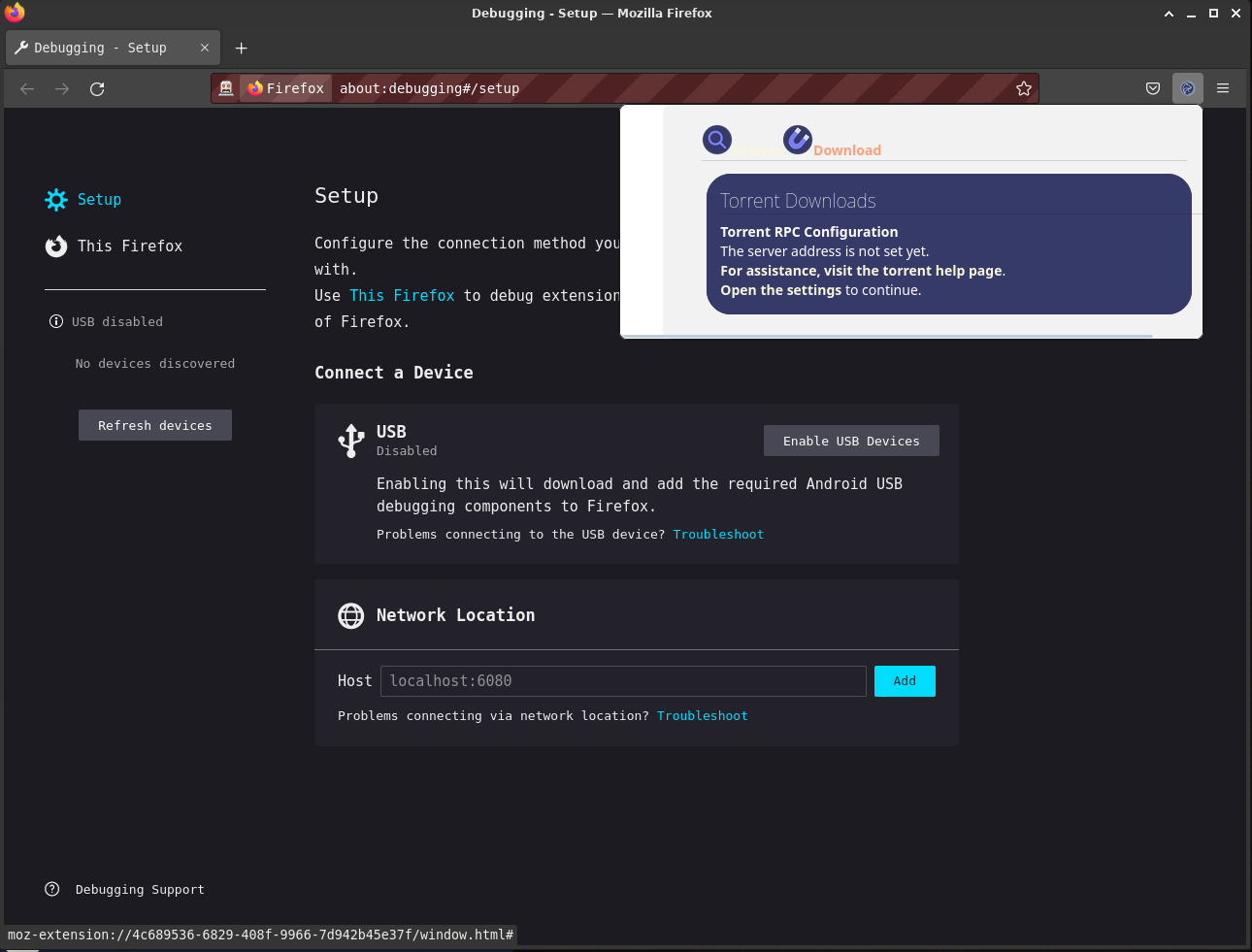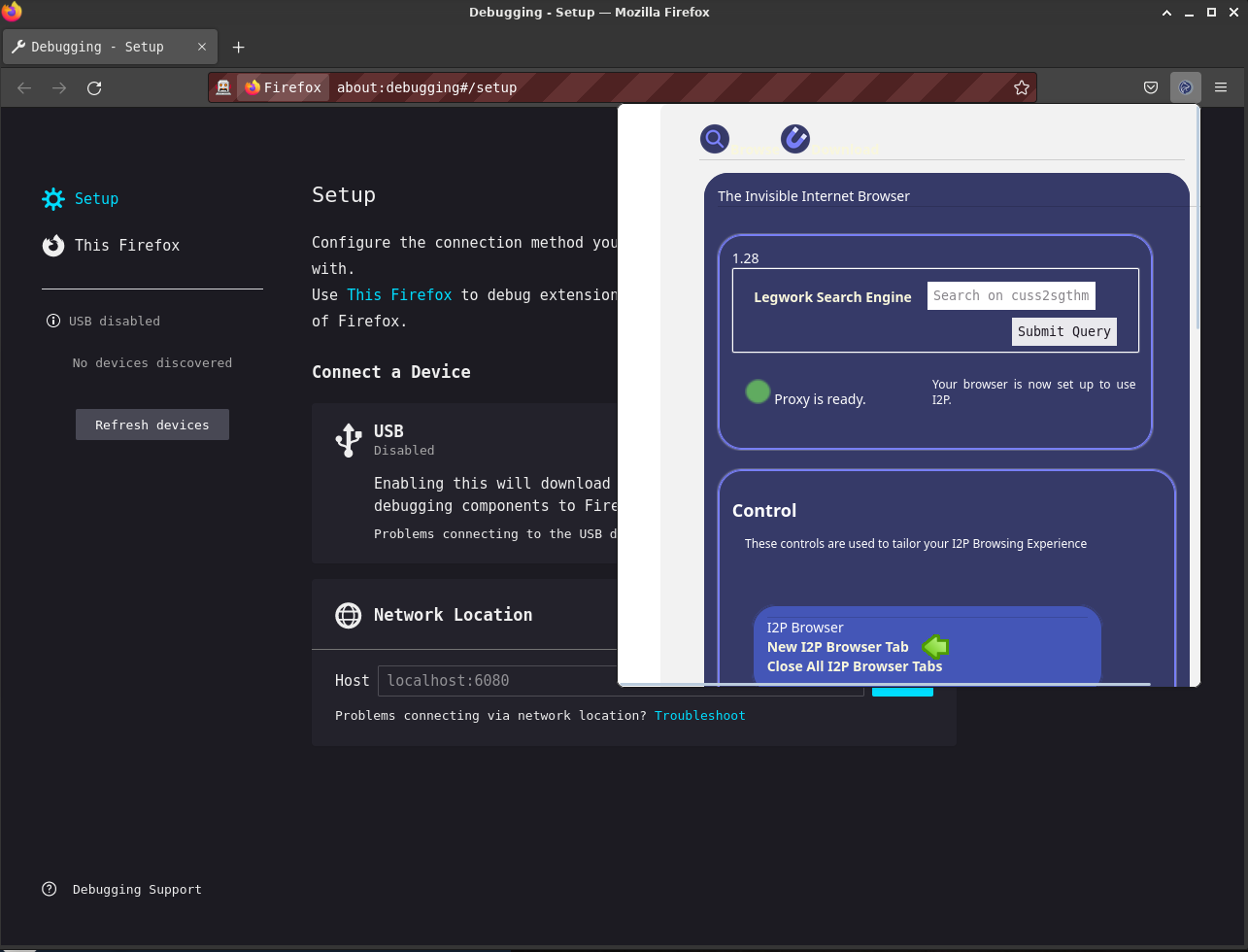I2P In Private Browsing v2.8.2





i2psetproxy.js
This is an Experimental webextension which introduces a set of new "Private
Browsing" modes to Firefox-based browsers(Supporting webextensions) that makes
it easier to configure a browser to use I2P securely and adds features for
making I2P applications easier to use. It does this by isolating I2P-specific
settings to Contextual Identities within Firefox, then loading them
automatically when the user requests them. It also adds convenience and
management features specific to I2P like protocol handlers and native messaging
systems.
Features
- [done] Provide a way to launch into an I2P-Specific contextual identity
(container). Intercept requests to .i2p domains and automatically route them
to the I2P container. Isolate the router console from other local
applications by automatically intercepting requests to the router console to
another container. - [done] Indicate the I2P browser is in use visually. Find an
acceptable way to indicate it on Android. - [done] Set the http proxy to use the local I2P proxy automatically.
Provide specific configuration for other types of I2P proxies(SOCKS,
isolating HTTP) - [done] Disable risky webRTC features/offer the option to re-enable
them with the proxy enforced. - [done] Change the color of the browser window to indicate that I2P is in
use - [ready/broken/wip] Provide help in a variety of languages.
- [wip] Monitor the health and readiness of the I2P router it is
instructed to use. Currently the plugin checks whether the HTTP Proxy is
working by fetching an image from "http://proxy.i2p" and displaying a result.
A work-in-progress binding to i2pcontrol is available in ./i2pcontrol, it is
inert at this time. - [Done] Handle router console applications under their own origins and
within their own contextual identity. (1) The router console is automatically
confined to it's own container tab. (2) Use a custom protocol handler to
place each i2p application/plugin under it's own origin, shortening router
console URL's and placing applications under their own origin. - [wip] Handle Torrents by talking to i2psnark-rpc plugin and then
adding them directly into the Firefox downloads drop-downs, menus, etc. If I
can. Right now instead of talking to snark-rpc, it uses a web-based protocl
handler that simply auto-fills the torrent into i2psnark. - [barely started] Isolate traffic by contextual identity to it's own HTTP
Proxy tunnel, each reflecting it's own pseudonymous identity within I2P. The
contextual identities. For now, the contextual identities used to manage
browsing are "I2P Browsing" and "Web Browsing" where I2P Browsing is capable
of using an outproxy but in the case of traffic destined for the clearnet
does not do header rewriting, and Web Browsing falls back to the Proxy
configured in Firefox. The I2P Browsing will be expanded to- I2P Amnesiac Browsing: Use for General Browsing, stores no history and
uses an HTTP Proxy with a very short tunnel-close timeout and no key-reuse. - I2P Social Networking: Use this for logging into social network accounts,
forums, and other interactive asynchronous public communication platforms
where your identity is behaviorally linkable. This has a very long
tunnel-close timeout and key-reuse until specifically invoked. - I2P Blogging: Use this for posting content to the web interface of your
blog or to other similar websites that you create content on.
- I2P Amnesiac Browsing: Use for General Browsing, stores no history and
Super Extra Important Background Info:
This plugin's viability is directly related to the viability of Mozilla and
Tor's work on hardening Firefox itself and of particular interest are the
"Uplift" and "Fusion(Firefox Using Onions)" projects.
Links about Project Uplift
- https://wiki.mozilla.org/Security/Tor_Uplift
- https://wiki.mozilla.org/Security/FirstPartyIsolation
- https://wiki.mozilla.org/Security/Fingerprinting
- https://wiki.mozilla.org/Security/Fennec%2BTor_Project
- https://wiki.mozilla.org/Security/Tor_Uplift/Tracking
Project uplift seems to have largely been accomplished?
Links about Project Fusion
- https://wiki.mozilla.org/Security/Fusion
- https://trac.torproject.org/projects/tor/wiki/org/meetings/2018Rome/Notes/FusionProject
- https://blog.torproject.org/tor-heart-firefox
The Old Version
New versions of this extension create an I2P in Private Browsing mode instead.
The old version set the proxy globally.
- This is the new version: [link]
- This is the old version: [link]